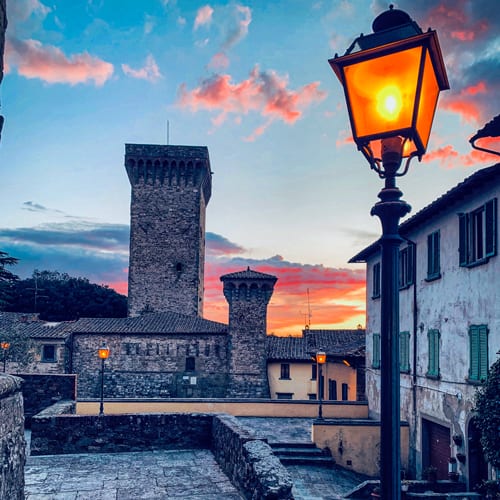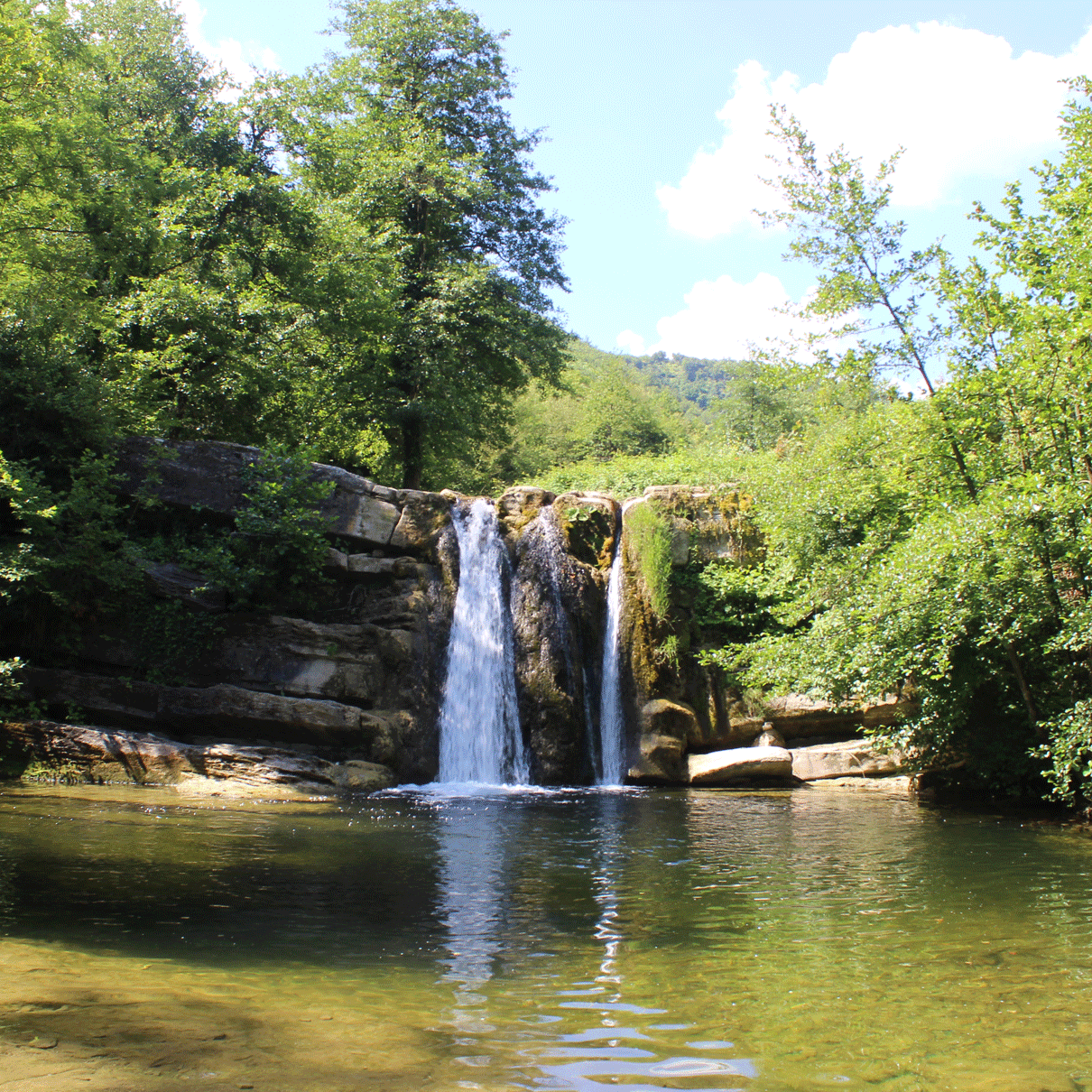 Montaione
Montaione
MUNICIPALITY OF Montaione
(Province of Firenze)
Altitude
mt. 342 a.s.l.
POPULATION
3.638 (383 in the borgo)
TOURIST INFORMATION
Tourist office (IAT)
Via Cresci 17/19
Ph. 0571 699255
turismo@comune.montaione.fi.it
www.comune.montaione.fi.it
 The Name
The Name
The toponym Montaione is attested for the first time in an act of donation of 1113. The most accredited hypothesis is that it derives from the word Monte and from the Longobard anthroponym Ajone.
Montaione is the borgo of green tourism in Tuscany, which registers almost 300,000 days of tourist presence per year. Situated between Valdelsa and Volterrano, surrounded by hills of oak and chestnut woods, vineyards and olive groves, clayey slopes bordered with cypresses, the medieval borgo gathers around its bell tower, dominating an environment with typical features of the Tuscan landscape inland.
Protected by a strong city wall reinforced by eleven towers, accessible by two main doors – Porta Fiorentina and Porta Pisana – the castle had an oval-shaped urban plan based on a network of roads consisting of three parallel roads connected by narrow alleys and dominated by the central square. Despite some changes over the centuries, the last of which was the destruction of the two doors during the Second World War, the correspondence between the current urban structure of the borgo and the medieval layout of the castle is evident: the streets, alleys and squares, once lined with the workshops, furnaces and glassware, are those of the time, the perimeter of the ancient walls is still visible, the entrance doors of today’s businesses are flanked by a window, as in the ancient shops.
Among the most prestigious buildings of the borgo are the Praetorian Palace and the Church of San Regolo, both overlooking, directly or indirectly, the central square. Already in the middle of the thirteenth century, the Praetorian Palace was the place deputed to the government of the community. Its stone and brick façade is in fact adorned with a series of coats of arms in stone and glazed terracotta, representing some of the families who ruled the city over the centuries. Today it houses the Municipal Archaeological Museum.
San Regolo is the most important church in Montaione. Already present in the late Middle Ages, it has undergone many renovations over time. The exterior is characterized by massive buttresses joined by arches to support the vault. Inside there are sacred paintings dating from the thirteenth to the nineteenth century, among which stands out the Madonna del Consiglio attributed to Guido di Graziano.
Also Palazzo Mannaioni, a historical residence dating back to the sixteenth century, is important, even if the current configuration is that acquired in the eighteenth century. It was built by the Mannaioni, a family of Florentine notaries who moved to Montaione. In the past it was equipped with granaries and an oil mill covered with mighty cross vaults. Today the building houses a hotel and a restaurant that preserves the suggestive underground cellar.
The “Jerusalem” of San Vivaldo is one of the most significant examples of reproduction of the holy places in the West for the purpose of a substitute pilgrimage. A citadel of chapels and temples, built in the woods by Franciscan friars in the early sixteenth century, which reproduces to scale the topography of Jerusalem of the time and houses sculptural groups of the school of Della Robbia inspired by the Passion and life of Christ.
Castelfalfi: a Longobard settlement, perhaps a former Byzantine garrison. It still has the mighty fortress with fortified ramparts and partially evolved into the shape of the villa, the hamlet developed in the late Middle Ages and the Romanesque church of San Floriano. The place is at the centre of a vast tourist development project.
Promontory and Sanctuary of Pietrina: a spur so high that it seems unreachable, a winding path in the woods, a view as far as the eye can see, embracing Volterra and the Valdera. But there is also a little church next to the towers of an ancient castle, a Madonna and Child by the Sienese Bartolo di Fredi, stolen and then found, which returns every year in September from Volterra for the solemn feast that welcomes it.
Montaione is the city of truffles. The borgo is in fact located in the area of the San Miniatesi Hills, one of the most prized truffle areas in Italy. In autumn the white truffle of Montaione enriches the tables of the restaurants, and at the end of October there is a Truffle Festival – Market Exhibition of the Truffle of Typical Products, the festival that celebrates the values of the territory.
“Summer in Montaione” is a program of events organized in Montaione, that alone is worth a holiday around here. Concerts of classical and jazz music, dinners in the square, food festivals, shows for children, craft markets, festivals.













